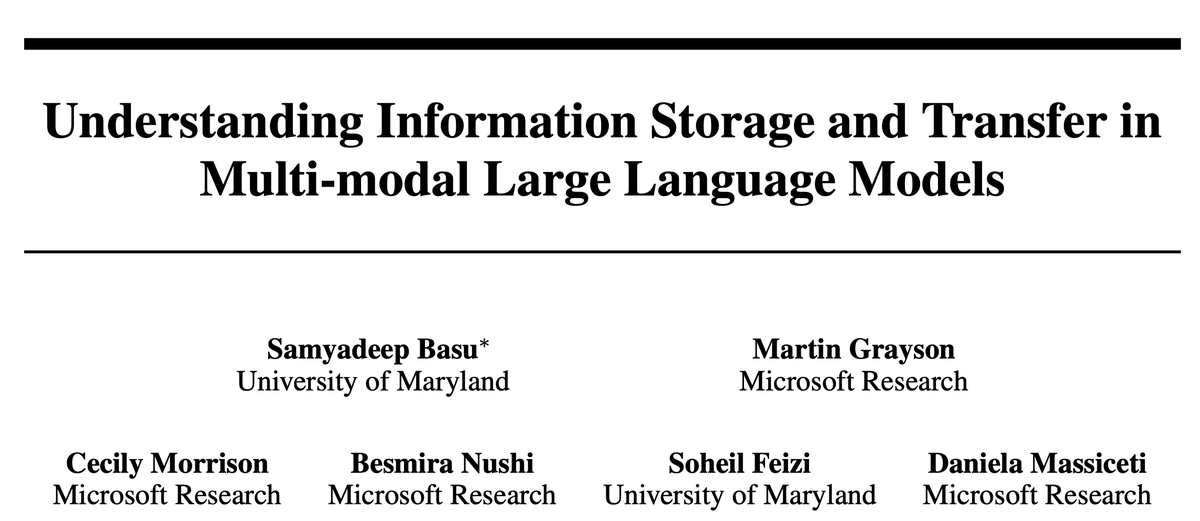
Samyadeep Basu
@basusamyadeep
CS PhD at UMD, Research Intern @AdobeResearch; Past: Research Intern @microsoft, @AdobeResearch;
Research on vision-language, FSL, model interpretation
ID: 1554118112974340102
http://samyadeepbasu.github.io 01-08-2022 14:53:42
56 Tweet
150 Followers
109 Following

I will be presenting this paper tomorrow at EMNLP 2025 at Poster Session F (Riverfront Hall) at 10:30 AM! Come check it out 😁! Paper link: aclanthology.org/2024.findings-… #EMNLP2024 #NLProc



Interested in how MLLMs (e.g., LLaVa) process information "mechanistically" for VQA tasks? Checkout our #neurips2024 paper, in which we study this; tl;dr : LLMs under a visual prompt process info quite differently! Soheil Feizi Daniela Massiceti Besmira Nushi 💙💛






















